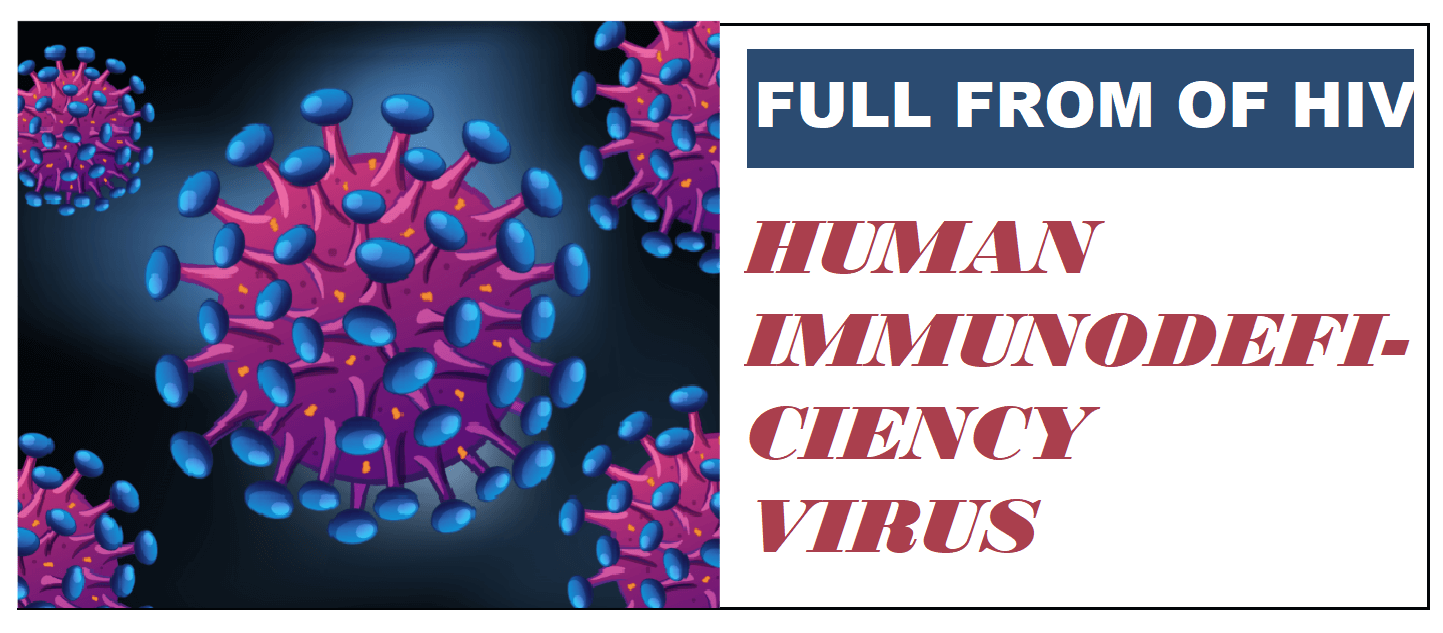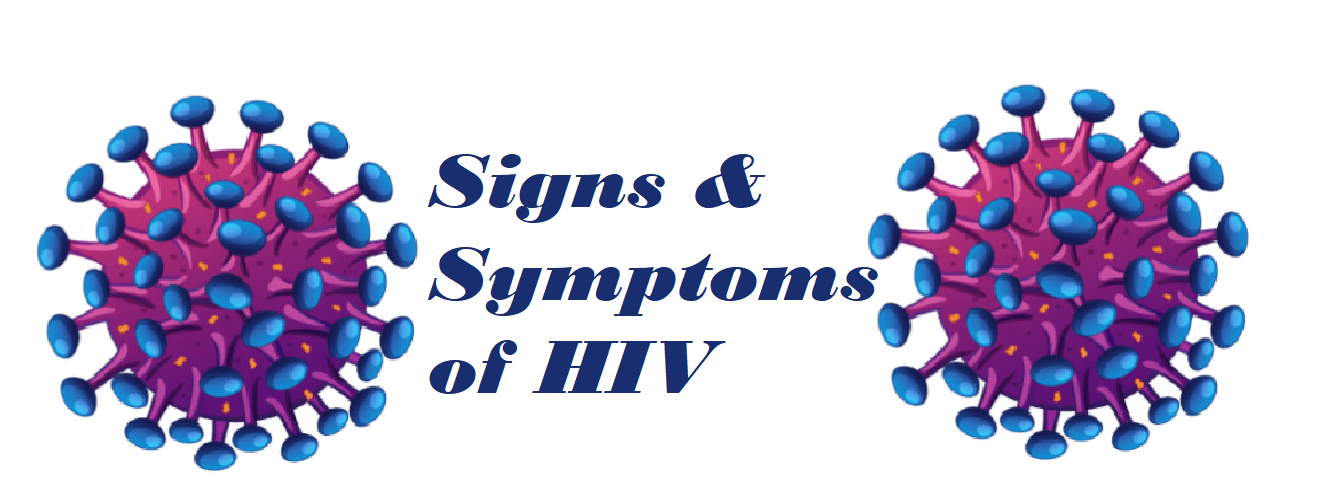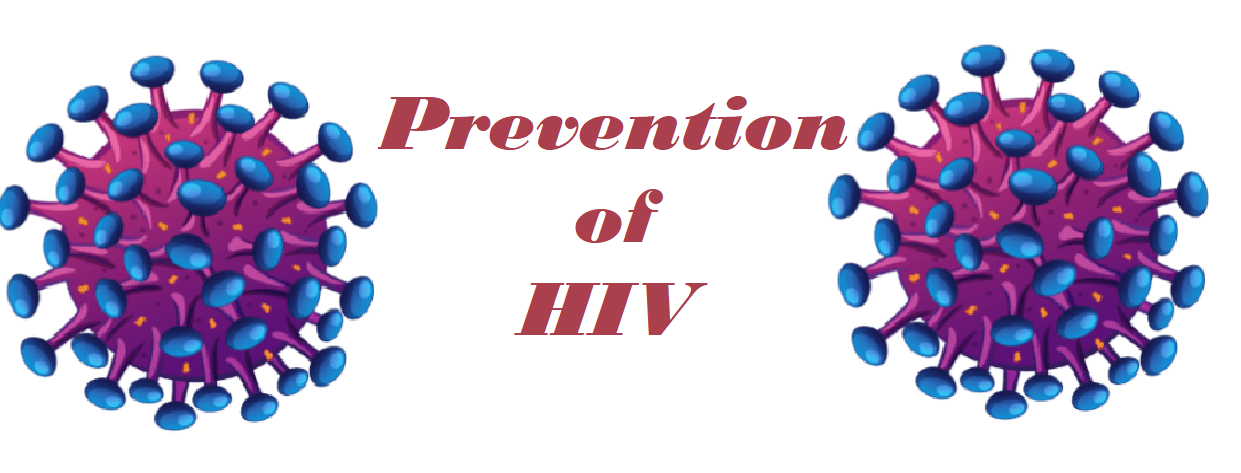Full form of HIV
Full form of HIV: In the early 90s, the AIDS epidemic caused people to be scared of toilet seats and made sex seem frightful. But since then, people have learned a lot about HIV and AIDS, how it is passed from person to person, even how to treat and prevent it. Even knowing so many details about HIV, most of us don't know what HIV stands for.
The abbreviation of the fatal disease HIV is Human immunodeficiency virus.

This tutorial will briefly cover about the overview, definition, prevention, cure, treatment, and other detailed information related to HIV or Human immunodeficiency virus.
Topics Covered:
- What is HIV?
- How is HIV transmitted?
- Classification of HIV stages
- Sign & Symptoms of HIV
- Precautions of HIV
- Who is at risk of HIV infection?
What is HIV?
“Human immunodeficiency virus or HIV is a fatal virus that attacks your immune system and your body's infection-fighting cells. In the later stages of HIV infection, it damages your immune system and leads to Acquired Immunodeficiency Syndrome or AID. Hence it is also known as HIV/AIDS.”
HIV is a virus that attacks the cells that help fight infection in the body, and they impair the body's ability to fight bacteria, viruses and fungal infections. In the last three decades alone, 75 million people have been diagnosed as newly HIV positive, and many of these people don't even know that they are infected. If HIV infection is left untreated, it usually takes approximately ten or fifteen years for the immune system to be so critically damaged that it can no longer defend itself. However, as per researchers, the pace at which HIV grows differs depending on age, body health and genes.
HIV damages the special white blood cells (CD4 cells) and makes more copies of itself. If a considerable quantity of WBC's is destroyed, the body is no longer capable of fighting against germs, infection and bacteria. In its advanced stage, HIV transforms into AIDS. AIDS is the stage when the human immune system is completely damaged. Well, we don't have treatment for AIDS. We do have treatment available in prevention options for HIV. To ease in negative symptoms, Anti-retroviral therapy, better known as ART, is introduced to help people who are HIV positive with long and healthy lives and reduce their chances of transmitting HIV to another person. Another alternative is Pre-exposure prophylaxis (also known as Prep) is a medication to people who do not have HIV can take to lower their chances of developing HIV.
As per researchers, it is believed that both HIV-1 and HIV-2 HIV was first commenced in non-human species, and slowly with time, it dispersed and spread to humans. Although the disease had been around humans for generations, it was in the 1980s that it was diagnosed officially. Since then, this fatal infection has spread worldwide in no time leading to the AIDS epidemic, killing over 25 million people around the world.
The overviews of HIV/AIDS infection are as follows:
| Specialty | Infectious disease, immunology |
| Symptoms | Early stage symptoms: Flu-like illnessLater stage symptoms: Large lymph nodes, fever, weight loss |
| Complications | Opportunistic infectionsTumors |
| Duration | Lifelong |
| Causes | Human immunodeficiency virus(HIV) |
| Risk factors | Unprotected sex,Possessing another sexually transmitted diseaseExperiencing needlestick crampNeedle sharingMedical procedures including unsterile cutting or piercing |
| Diagnostic method | Blood tests |
| Prevention | Safe and protected sexmale circumcisionneedle exchangepre-exposure prophylaxispost-exposure prophylaxis |
| Treatment | Antiretroviral therapy |
| Frequency | 55.9 million to 100 million HIV worldwide cases (as per survey conducted in 2019)1.7 million new HIV cases (as per survey conducted in 2019)38 million living with HIV (2019) |
| Deaths | 32.7 million total deaths (as per survey conducted in 2019) |
How is HIV transmitted?
HIV is contracted in several different ways, but it is not a contagious disease and can’t be transmitted through urine, sweat or saliva. One would not get infected with this virus by simply touching, coughing or sneezing, hugging, kissing, or sharing towels or a toilet seat with someone who has the virus. The various ways of HIV transmission are given below:
- The most common way of HIV transmission is through unprotected sex.
- Exchange of bodily fluids, namely semen and vaginal secretions.
- Sharing of HIV infected blood products or the sharing of HIV infected needles.
- A newborn can be infected with HIV through breastfeeding or even can be transmitted through pregnancy by birth.
Classification of HIV stages
WHO (World Health Organization) first introduced a description for HIV/AIDS in 1986. The various stage HIV infections are as follows:
- Primary HIV infection: At this stage, the infected patient is mostly asymptomatic or suffers from acute retroviral syndrome.
- Stage I: The HIV-infected is either asymptomatic or associated with lymph node expansion.
- Stage II: The HIV infected may experience mild symptoms, including trivial mucocutaneous manifestations and chronic upper respiratory tract infections.
- Stage III: Usually, advanced HIV symptoms are witnessed at this stage, including recurrent diarrhea for more than a month, acute bacterial infections and even tuberculosis of the lung.
- Stage IV or AIDS: The last stage leads to AIDS or Acquired Immunodeficiency Syndrome. The infected person develops severe symptoms, including toxoplasmosis of the brain, candidiasis of the esophagus, lungs, trachea, bronchi, and Kaposi's sarcoma (a type of cancer).
Signs & Symptoms of HIV

Though no two people are the same, the vast majority of people will develop a symptom of severe flu-like illness after a prolonged period, mainly after two to six weeks after they come in contact with the virus. Some of the signs & symptoms often encountered by HIV infected patients are given below:
- Temperature
- Chills
- Severe Flu like illness
- Skin rash
- Headache
- Diarrheal illness
- Muscle pain and aches
- Swollen lymph glands in the neck and under armpit
- Joint pain
- Sore throat
Preventions of HIV

ELISA or Enzyme-Linked Immuno Sorbent Assay is an HIV test that is conducted to detect HIV infection. So far, HIV/AIDS is fatal and cannot be cured, so the wisest solution is HIV prevention. The various precautious measures of HIV are as follows:
- AIDS awareness amongst teenagers and adults is essential. Since it does not transmit by normal physical touch, the infected patient must not be isolated and should be handled with proper attention and care.
- Always use protective sex barriers (male: external condoms and female internal condoms) during physical intercourse. It is the best method to prevent HIV infection and various other sexually transmitted infections.
- While injecting drugs, always use a clean needle and syringe, and never share your personal items like razors, toothbrushes etc.
- Suppose one got pregnant by having sexual intercourse with HIV infected. In that case, there is a possibility that the infection could pass to the baby’s body during pregnancy, birth or even through breastfeeding. But exercising HIV treatment rightly during the early stages of pregnancy and breastfeeding can implicitly eliminate the risk of HIV.
Who is at risk of HIV infection?
The most common question people ask who's at risk of HIV infection and who should get tested?
Most doctors advise that everybody gets tested, particularly those living in a relationship or starting a new relationship, or if someone thinks they had a high-risk encounter (by having an unprotected sexual encounter). However, certain groups are at higher risk of HIV infection. It includes people who share needles or are intravenous drug users or people who share needles for steroid use or sex workers.